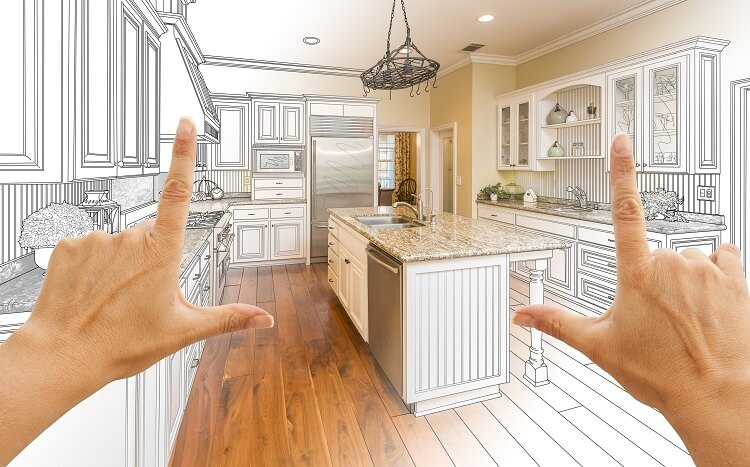From Guest Blogger Lizzie Weakly: Five-Step Home Remodeling Guide for Energy Efficiency

Custom Kitchen Design
If you are thinking about remodeling your home, you should consider energy efficient design. Not only will it help to reduce your carbon footprint, but it will also reduce the amount of money you spend to run your household. If you are interested in instituting some energy efficient design into your home remodel, here are some suggestions.
Energy Efficient Lighting
Every home needs lighting. There is no way around it. If you would like to install more energy efficient lighting you have a couple of possibilities. Solar tubes can focus sunlight from the outside and direct it to darker areas of your home during the day. LED lighting is also a possibility. It requires less energy to run, provides brilliant white light and lasts about 25 times as long as an incandescent bulb.
Green Roof
A green roof is a roof upon which some sort of vegetation has been planted. It can be as simple as a couple of inches of ground cover or as complex as a park complete with trees, shrubs and flower beds. There are multiple benefits to a green roof. It can help keep local temperatures cooler during the summer through a process called evapotranspiration. It provides added insulation to help keep things warmer during the winter. Also, they can contribute to reduced air pollution, storm water management and an aesthetic appeal. Companies like Prime Building and Construction can help you decide on the best design for your roof.
Low-Flow Fixtures
Water consumption is another important part of creating an energy efficient home. Just like putting in the right lighting fixtures can help to lower your electric bill, low-flow water fixtures can help to lower your water bill. This is another step which not only lowers your bills but also puts less stress on the environment. Most home improvement stores carry a selection of low-flow fixtures.
Insulation
Insulation helps to maintain the temperature of your home. It can help to keep cooler air inside during the summer so that you do not have to run your air conditioning as hard. During the winter it helps to keep heat in.
Using less energy to heat and cool your home is only one of the ways in which you can help to minimize your carbon footprint with insulation. While you can use almost any insulation, there are types of insulation that are made of eco-friendly materials like plant cellulose and recycled denim. These are easily found at home stores or online.
Solar Gain
Solar gain is the process by which the sun’s rays are used to passively heat a space. Window placement can enable you to make the most of the sun’s rays during the winter. If you place windows on a south-facing wall, and have the right over-hang, the winter sun can help to heat your home as its rays are admitted through your windows and the resulting heat is retained by your well-insulated walls. Because the sun rides higher in the sky during the summer than in the winter, the over-hang will prevent the summer sun from making your home even warmer. Consult a green designer for the best way to create solar gain in your remodel.
When you are considering remodeling your home, why not make it more energy efficient? Not only will energy efficiency help to reduce your carbon footprint, it will also reduce your bills. Let these five suggestions show you how.
